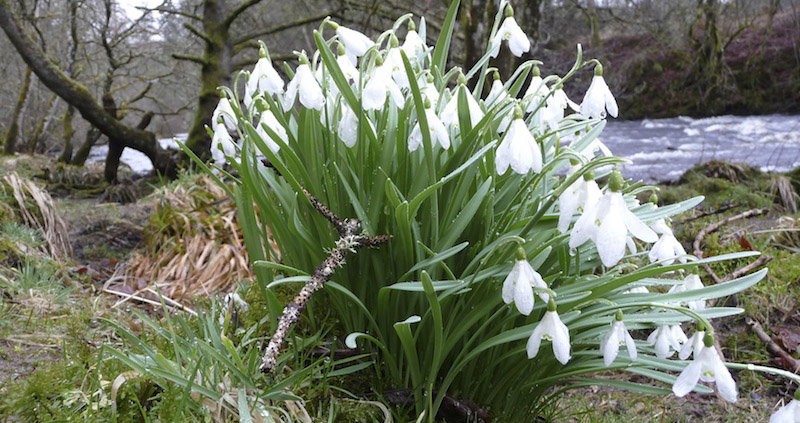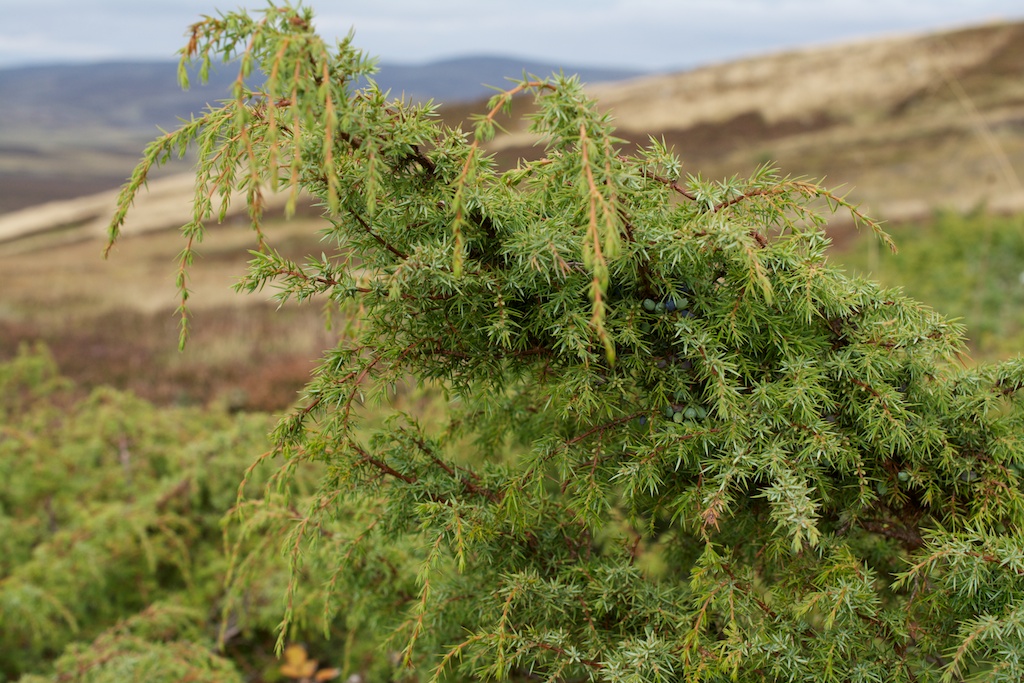
Snowdrops: welcome signs of spring
 With the blessing of fine weather over the last few days, I’ve been looking for snowdrops in our garden – but sadly, most have succumbed to the boggy conditions caused by the endlessly wet winter. I have, however, seen them in bloom on our travels, and it’s a sight that really raises my spirits with the hope of spring weather and longer days.
With the blessing of fine weather over the last few days, I’ve been looking for snowdrops in our garden – but sadly, most have succumbed to the boggy conditions caused by the endlessly wet winter. I have, however, seen them in bloom on our travels, and it’s a sight that really raises my spirits with the hope of spring weather and longer days.
There are around 20 species of snowdrop, of which Galanthus nivalis is the most common, and to this list must be added many more beautiful hybrids: amazingly, at least 500 cultivars have been recorded. Avid snowdrop collectors are known as galanthophiles, and large sums of money sometimes change hands for rare bulbs that might have unusual colouring or a distinctive petal formation.
In the wild, snowdrops are found throughout much of Europe: their range extends from Spain and the Pyrenees, across to Russia and the Ukraine, and into Italy, Germany and Greece. They have also been introduced to Canada and the USA.
 Some sources say that snowdrops were first brought to Britain by the Romans, but other authorities believe that they were introduced as late as the 1500s. The first reference to snowdrops as a garden flower in Britain can be found in the ‘Herball, or Generall Historie of Plants’, published by botanist John Gerard in 1597. Less than 200 years later, in 1778, it was noticed that the bulbs had naturalised and begun growing here in the wild.
Some sources say that snowdrops were first brought to Britain by the Romans, but other authorities believe that they were introduced as late as the 1500s. The first reference to snowdrops as a garden flower in Britain can be found in the ‘Herball, or Generall Historie of Plants’, published by botanist John Gerard in 1597. Less than 200 years later, in 1778, it was noticed that the bulbs had naturalised and begun growing here in the wild.
Snowdrops are affectionately known as the ‘fair maids of February’, and their pure white flowers, modestly drooping as if in prayer, were chosen by the Christian church as a symbol of Candlemas, which is celebrated on 2nd February. It may be for this reason that the grounds of many old monasteries are carpeted with snowdrops every spring.

Galanthus comes from the Greek words, ‘gala’, meaning ‘milk’, and ‘anthos, meaning ‘flower’. In folklore, the snowdrop is said to represent the passing of sorrow, and it was considered to be bad luck to bring a single bloom into the house. In the west of England, an old saying still warns that snowdrops should not be brought indoors before the first chicks are hatched, because the eggs risk being addled.
Snowdrops, I was interested to discover, are one of the ‘birth flowers’ for people born in January (myself among them). Some of the species and cultivars are delicately scented.
 Traditionally, extracts from Galanthus were used to treat neurological conditions, and to ease headaches. In his Odyssey, Homer describes a mysterious antidote for poison, which he calls ‘moly’; it has been suggested that this might have been Galanthus. I was also fascinated to read that snowdrops contain an alkaloid called galantamine, which is an important ingredient in modern drugs for the treatment of Alzheimer’s disease. What I would like to know is: how did the ancients gain their wisdom?
Traditionally, extracts from Galanthus were used to treat neurological conditions, and to ease headaches. In his Odyssey, Homer describes a mysterious antidote for poison, which he calls ‘moly’; it has been suggested that this might have been Galanthus. I was also fascinated to read that snowdrops contain an alkaloid called galantamine, which is an important ingredient in modern drugs for the treatment of Alzheimer’s disease. What I would like to know is: how did the ancients gain their wisdom?
I’ve been trying to remember a Welsh poem – it may even be a nursery rhyme – which an old friend once told me. Sadly, I could only recall the first line, so I had to look up the rest!
O lili wen fach, o ble daethost di,
A’r gwynt mor arw ac mor oer ei gri?
Sut y mentraist di allan drwy’r eira i gyd?
Nid oes flodyn bach arall i’w weld yn y byd!
Roughly translated, it means:
Oh, little white lily, where did you come from?
With the wind’s cry so bitter and cold?
How did you venture out through all the snow,
When there’s no other flower to be seen?
The National Trust and National Trust of Scotland publish a list of houses and gardens with spectacular snowdrop displays. Have you seen any carpets of snowdrops this year?





